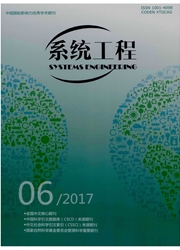

 中文摘要:
中文摘要:
粗放型的工业增长模式给我国矿业城市生态环境带来巨大压力。为了实现可持续发展,矿业城市工业转型势在必行。为了准确衡量我国矿业城市工业增长、资源与环境之间的协调度,本文将工业生产进程中的自然资源消耗与环境污染排放视为"环境压力",建立DEA效率模型实证测算了2003-2012年我国48个矿业城市的工业生态效率,并从多个维度分析了不同区域、资源类型矿业城市工业生态效率的异质性特征及演变趋势,构建Tobit回归模型检验矿业城市工业生态效率的影响因素。结果表明,我国矿业城市工业生态效率整体水平较低,还存在很大的节能减排潜力;不同区域、资源类型矿业城市的工业生态效率差异性较大;经济发展,提升第二产业比重以及增加环境治理投资对提升矿业城市工业生态效率有显著促进作用,而外资利用的影响则存在不确定性。
 英文摘要:
英文摘要:
Extensive industry development mode brings enormous environmental pressure to mining city.For realizing sustainable development,transforming the industry mode of mining cities is imperative.To measure the coordination degree resource-environment-industry system of mining cities,this paper regards the natural resources consumption and pollutants reduction in the course of industry production as environmental pressures,builds DEA efficiency model and measures industrial eco-efficiency of China's 48 mining cities over the period of 2003-2012.Then,the heterogeneous characteristics and evolution trends of industrial eco-efficiency of different regional and resource-type mining cities are analyzed.Finally,Tobit regression model is used to test the influencing factors of mining city's industrial eco-efficiency.Empirical results show that China's mining cities' overall industrial eco-efficiency is still low and has great potential of resource saving and emission reduction.There exist obvious differences between the industrial eco-efficiency different region and resource-type mining cities.Economic development,raising the proportion of secondary industry and increasing environmental investment all have positive effects on improving industrial eco-efficiency of mining cities.However,the effect of utilizing of foreign capital is uncertain.
 同期刊论文项目
同期刊论文项目
 同项目期刊论文
同项目期刊论文
 期刊信息
期刊信息
